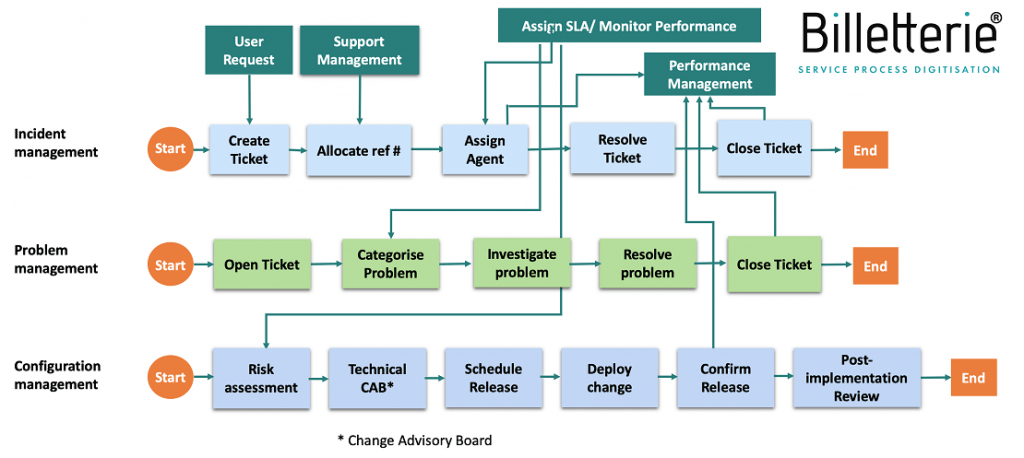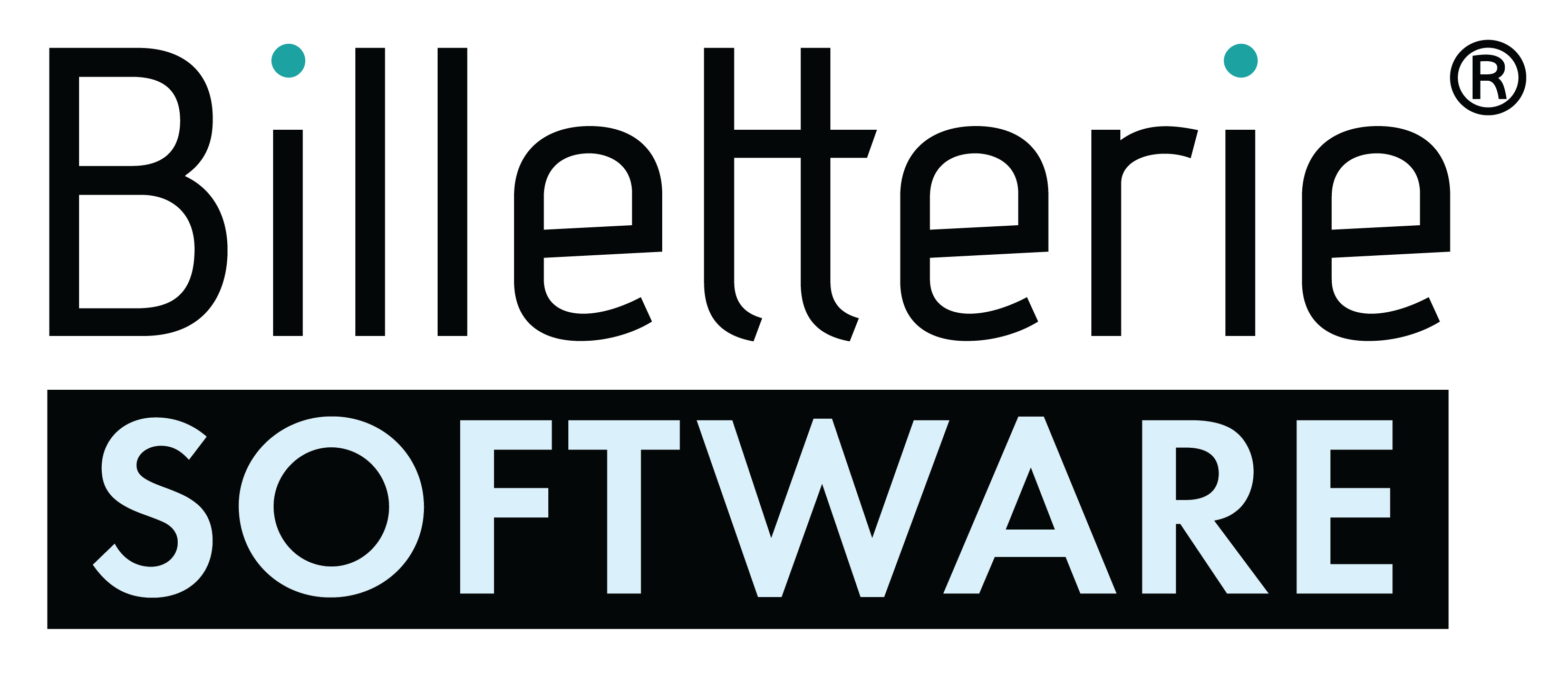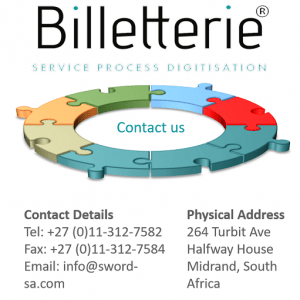
The ITSM workflows currently included in the Billetterie® solutions are compliant with the ITIL process groups for incident management, problem management and configuration management. Additional process groups for IT management can be customised for any organisational design. Incident management denotes service processes for logging and resolving user issues in the IT environment, whilst problem management is a facility that puts together the investigative processes for IT issues. Change management involves the systematic deployment of IT solutions in line with the organisational governance policies
The Billetterie® ITSM workflow encompasses all the activities involved in designing, creating, delivering, supporting and managing IT services. It allows for the automation of simple and complex workflows, common actions, and routine tasks to increase operational efficiency. With Billetterie® ITSM, the user can automate processes by creating problem types or new catalogue items, cancelling service orders, and launching SLA escalations, early warnings, etc. The configurable services catalogue can be changed, modified, adjusted or re-configured making collaboration and organisational changes easy to implement. The following are recommendations for effective implementation of ITSM processes into the Billetterie® workflow engine:

Make sure that the service processes are well documented and up to date and that users understand all the steps and transfer points.

Define organisational dependencies and ensure that all the appropriate resources with all capabilities are captured.

Define the ITSM start, end, and transfer workflow points, which activities or tasks will initiate the respective workflow.

Billetterie enables the user to automate processes by creating problem types or new catalogue items, cancelling service orders, and launching SLA escalations, early warnings, etc.
[WP-Coder id =”1″]

